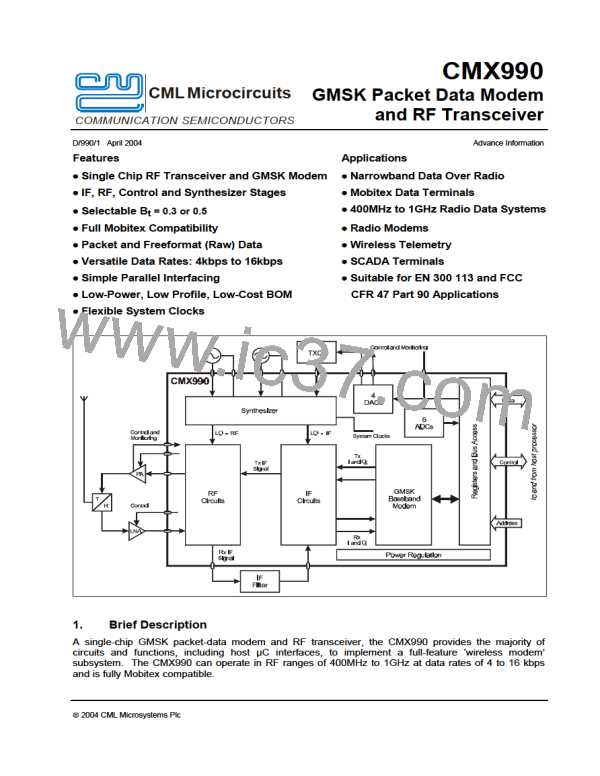GMSK Packet Data Modem and RF Transceiver
CMX990
5.1.3
Data Formats
Raw data
If required the user may transmit and receive raw data. This is transferred between the host
and device a byte (8 bits) at a time.
Note that it is important to have established frame synchronisation before receiving data to
enable the receiving device to decode synchronously. The user may add error detection and
correction by way of algorithms performed on the host device.
General Purpose Formats
In a proprietary system the user may employ the data elements provided by this device to
construct a custom, over-air data structure.
For example, 16 bits of bit sync + 2 bytes of frame sync + 4 bytes of receiver and sender
address + n data blocks would be sent as:
TQB (bit and frame sync) + TQB (addresses) + (n x TDB) + TSB
And received as:
SFS + RSB + RSB + RSB + RSB + (n x RDB)
Mobitex Frame Structure
The Mobitex format for transmitted data is in the form of a Frame Head immediately followed
by either 1 Short Data Block or a number of Data Blocks (0 to 32).
The Frame Head consists of 7 bytes:
2 bytes of bit sync:
1100110011001100 from base,
0011001100110011 from mobile
bits are transmitted from left to right
2 bytes of frame sync:
System specific.
2 bytes of control data.
1 byte of FEC code, 4 bits for each of the control bytes:
bits 7-4 (leftmost) operate on the first control byte.
bits 3-0 (rightmost) operate on the second control byte.
Each byte in the Frame Head is transmitted bit 7 (MSB) first to bit 0 (LSB) last.
The normal and short data blocks consist of:
18 bytes of data (Data Block)
OR
4 bytes of data (Short Data Block).
2 bytes of CRC calculated from the data bytes.
4 bits of FEC code for each of the data and CRC bytes
The resulting data block bits are interleaved and scrambled before transmission.
ã 2004 CML Microsystems Plc
18
D/990/1

 CMLMICRO [ CML MICROCIRCUITS ]
CMLMICRO [ CML MICROCIRCUITS ]